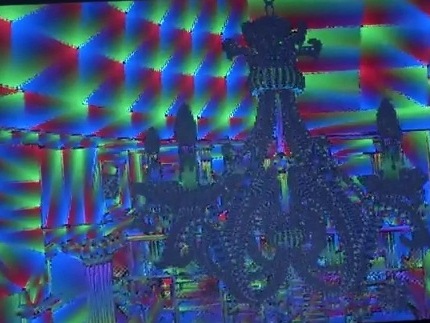Cloud-based, ray-traced gaming shown at IDF
Intel demos ray-traced Wolfenstein on a standard laptop

Intel's ray-tracing maestro, Daniel Pohl, showed off a live demo of a ray-traced Wolfenstein, running in a cloud-based scenario, and on a decidedly non-gaming laptop.
The demo was part of 'day zero' of the Intel Developer Forum in San Francisco and, more specifically, a presentation by Intel's newly established Interaction and Experience Research Lab, headed up by Labs Director Genevieve Bell.
The heavy processing grunt used to run the ray-traced Wolfenstein was performed by a set of servers relaying the information back to the client machine (which Pohl was showing the game on). That's with all the physics light calculations - they were being done on the fly as he panned around the scene.
The back and forth between the client and server was run through a gigabit switch but Pohl maintains that "it could be further optimised to run over the internet" meaning full, graphics intensive games featuring this tech could be run on machines with no gaming pedigree.
Pohl also believes there's still a place for dedicated gaming machines for what he calls "extreme gamers" but the practical demonstration of something so processor intensive being able to take place over the web might suggest otherwise.
Still the demonstration was rather jerky in places, but considering in one scene a chandelier had been replaced with a fully ray-traced version containing around a million triangles that's not altogether surprising. Especially when the whole original scene only contains around 300,000 triangles.
The jury is still out on ray-tracing in games. Are gamers really interested in light beams being done physically correct with a huge cut in frame rates, or is the synthesis of light refraction enough? Until there is no sacrifice asked of us gamers then it's always going to be the latter.
Sign up for breaking news, reviews, opinion, top tech deals, and more.
Daniel Pohl obviously thinks there's something in it as he's been creating ray-traced versions of games since Quake 3, the project that brought him to the attention of Intel.
There is also still something a little off-putting about ray-traced images too, something almost hyper-real about them, like an idealised version of a model instead of the inevitably slightly gritty real one.
After all, light refraction is only a single part of creating a realistic environment.
We'll have more from the Intel Developer Forum all this week on TechRadar.
------------------------------------------------------------------------------------------------------
Liked this? Then check out What if Microsoft disappeared overnight?
Sign up for TechRadar's free Weird Week in Tech newsletter
Get the oddest tech stories of the week, plus the most popular news and reviews delivered straight to your inbox. Sign up athttp://www.techradar.com/register